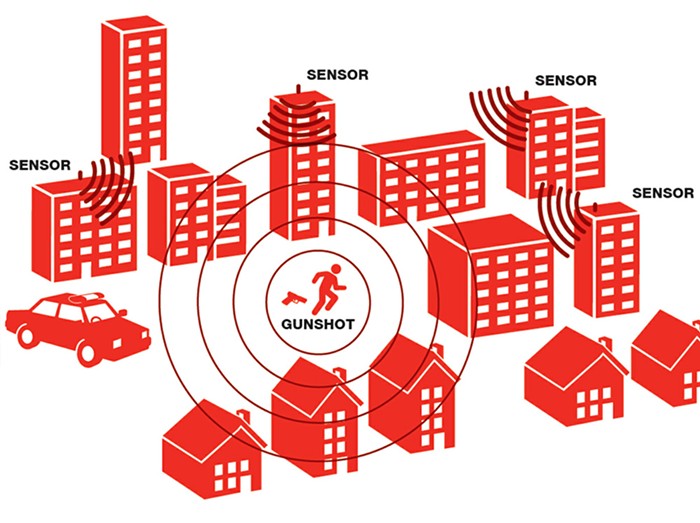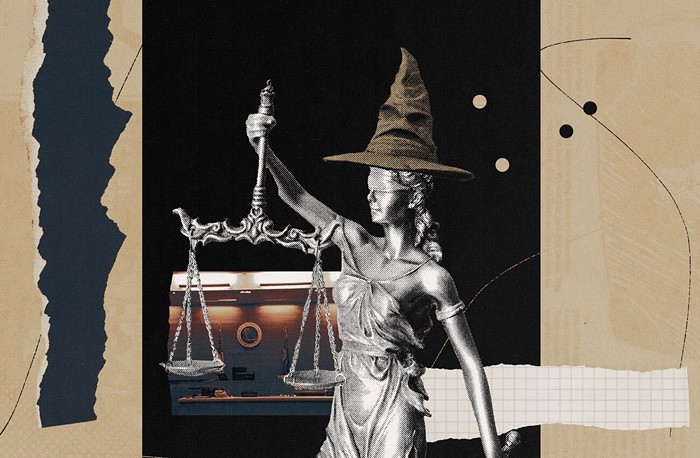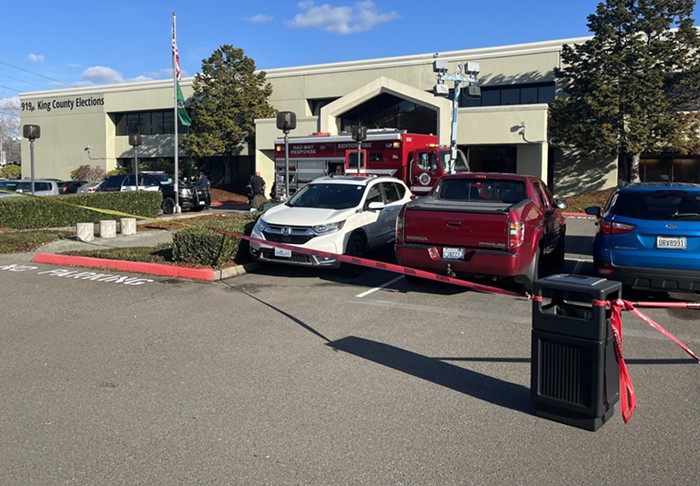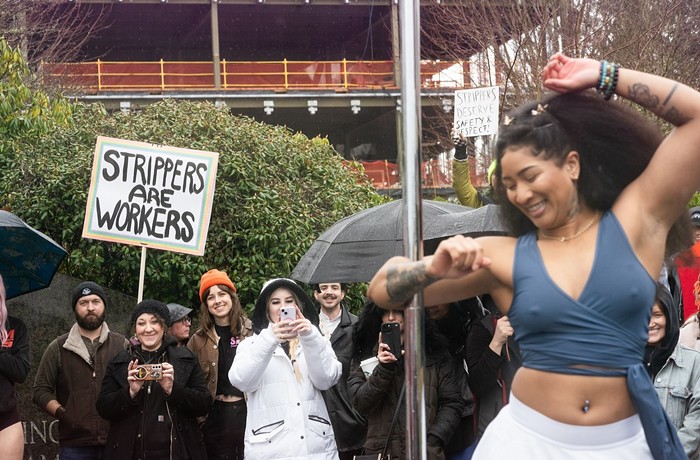A few months ago, 31-year-old Luis Edenso was at the Safeway in Rainier Beach picking up groceries. Suddenly, he heard gunshots from the down the block. "My natural instinct was to hit the floor," he said gravely. Edenso, a stocky Seahawks fan, looked around at his surroundings. Everyone else was going on with their shopping as if nothing had happened. "It was just normal to them."
Edenso grew up about 15 minutes away from the intersection of Rainier Avenue South and Henderson Street, near the Safeway. He was involved in street crimes as a youngster, he said, but got out of that life and transitioned into retail work. Now he mans the counter at a one-room MetroPCS storefront just north of the intersection.
Crime isn't nearly as bad as it once was in the area, according to Edenso, but sitting inside the store, he hears gunshots every couple of days. "I still call it the danger zone," he said.
Seattle police say more shots are fired in Rainier Valley than any other part of the city, and now the mayor and city council members want to install a federally funded system of microphones and cameras—gunshot detection technology commonly known as ShotSpotter—where Edenso works. Could ShotSpotter help police deter gun violence and catch shooters? Or is the system an overhyped piece of an ever-expanding high-tech surveillance apparatus?
For Edenso, there's no question. "That sounds amazing," he said when I described the system. "If it helps solve crimes, I'm all for it."
ShotSpotter is supposed to work like this: Microphones placed on light posts and buildings pick up the sound of a gunshot, swiftly triangulate the location, activate cameras for a limited period of time, and instantaneously transmit the information to police.
Council President Bruce Harrell has long been a fan of the technology, and he believes his constituents in South Seattle are hungry for it. Across the street from Edenso's storefront, at the Rainier Beach Community Center earlier this month, Harrell said the area has been "traumatized... by this senseless gun violence."
"At almost every community meeting where I have discussed installing an acoustic gunshot locator system," Harrell said recently, "I have received overwhelming positive feedback."
Still, "if the neighborhoods most affected aren't interested in it," Mayor Ed Murray promised at a recent press conference, "we won't be proceeding with it."
Not everyone in the neighborhood is on board. Edenso referred me to a small liquor store next to the Safeway. He'd talked with the owner about gun violence, and he was sure that she would welcome ShotSpotter, too. After all, he said, "If you're not doing anything bad, why would you worry about the sensors?"
The owner wasn't there, but the store manager, who preferred not to be named, hesitated to endorse the proposal after I described it to her. "It might make people safer, but I'm concerned about privacy," she said.
Sharyn Leonard, a teaching assistant at South Shore middle school, spoke with me on her way to the Safeway. She worries about ShotSpotter cameras surveilling the streets and infringing on legitimate uses of firearms.
"Sometimes you hear pop pop pop, and they lock the building down," Leonard said. "But it's gotten better. If I was that scared, I wouldn't live here."
Tammy Morales, an activist who ran against Harrell last year, opposes the program. "Perhaps instead of spending federal grant money on questionable surveillance of our neighbors," she wrote in a column for the South Seattle Emerald, "the City can be persuaded to invest in youth mentoring and job creation in the South End."
It's beyond dispute that ShotSpotter will provide the SPD with accurate information—exact times and locations—about gunfire within the detection zone, up to 80 percent of the time. It's also true that the false alarms raised by the system—20 percent of all detected incidents—have caused headaches in other cities.
There little evidence for Harrell's assertion, however, that ShotSpotter "increases the chances of actually apprehending the shooter." In a report released in April, the Center for Investigative Reporting found that over a two-and-a-half-year period, San Francisco police responded to 3,000 ShotSpotter alerts. But in two-thirds of the calls, police couldn't locate evidence of gunshots. Police made only two arrests. One was a gunman who sat down after firing his weapon and waited for police to arrive—a rare case. (Harrell could not be reached for comment before press time.)
When pressed to explain how the system reduced gun violence, San Francisco's then-police chief told the Center: "Anecdotally, we put ShotSpotter where we believed and/or knew we were having disproportionate gun violence. I can't give you a concrete example, but I know it's a nice technology to have."
In fact, one of the studies cited in a 2015 Seattle police memo on ShotSpotter, a brief from the National Institute of Justice, found back in 1999, "Gunshot detection systems are not likely to lead to more arrests of people firing weapons in urban settings"—because (of course) the assailants flee after they open fire.
The technology is a subscription-based product of SST Inc., a venture-capital-backed Silicon Valley start-up whose sophisticated lobbying efforts have led to more than 65 cities implementing the system. In Seattle, SST Inc. paid $4,400 to George Griffin, a local lobbyist who has worked for Comcast and real-estate companies, in 2013 and 2014 to advocate on its behalf.
Five municipalities have let their contracts with SST Inc. expire, some choosing to invest in video surveillance or hiring more officers instead, including midsize cities like Charleston as well as the tiny Eastern Washington town of Quincy. The town dropped the system in 2013 because it didn't deliver satisfactory results.
When the Center for Investigative Reporting asked cities across the country for data collected by the systems, ShotSpotter sent out a nationwide memo saying the information represented a "trade secret" exempt from public disclosure.
The Seattle Privacy Coalition calls ShotSpotter "snake oil." Nationwide, gun violence has been declining for the past decade, the group argued, and there's no proof that the technology reduces crime. "Instead of planting microphones all over crime-ridden neighborhoods, use the money for community policing and diversion programs like LEAD," the group said in a statement.
Former mayor Mike McGinn supported pushing ahead with ShotSpotter during his tenure, but Council Member Tim Burgess stripped it out of the city budget. This time, the funding comes from a federal grant, and Burgess says he's changed his mind. McGinn said the technology could be a helpful tool, but, he warned, "it's the broader community response that's really going to solve this stuff.”



















